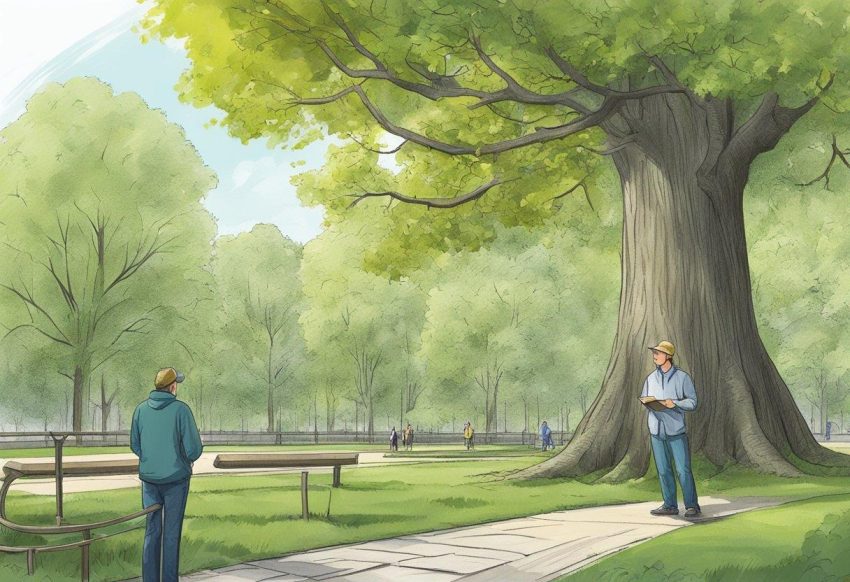Tree assessment is an important process that helps to ensure the safety and health of trees in London. It involves a comprehensive examination of all the trees within a particular property, conducted by certified arborists who assess the health and condition of each tree through tree surveys in London. The information provided in a tree assessment is used to determine what should be done with the trees on the property and contains lots of information that can be used to make informed decisions.
In London, tree assessment is particularly important due to the city’s large population and the many trees that are located in urban areas. Trees provide numerous benefits to the city, including improving air quality, reducing noise pollution, and providing shade and habitat for wildlife. However, they can also pose a risk to people and property if they are not properly maintained and assessed.
Understanding tree assessment in London is therefore essential for anyone who owns or manages trees in the city. By working with certified arborists and following best practices for tree care and maintenance, property owners can help to ensure the health and safety of their trees, as well as the safety of those who live and work nearby.
Fundamentals of Tree Assessment in London
Tree assessment is an essential process in London that helps in identifying the condition of trees and assessing the risk they pose to the surrounding environment. This section will discuss the fundamental aspects of tree assessment in London, including the legal framework for tree preservation and the importance of tree surveys for urban planning.
Tree Preservation and Legal Framework
In London, tree preservation orders (TPOs) are used to protect trees that are deemed to be of significant value to the community. The local planning authority (LPA) is responsible for issuing TPOs, which prohibit the cutting, uprooting, topping, lopping, or wilful damage of protected trees without the LPA’s consent. Landowners are required to obtain planning permission before carrying out any development that may affect TPO trees.
BS5837 tree surveys are an essential part of the planning process in London. They provide detailed information about the trees on a site, including their species, age, size, and condition. The survey process also involves an arboricultural impact assessment (AIA) and an arboricultural method statement (AMS), which help to identify the potential impact of the proposed development on the trees and outline measures to protect them.
Importance of Tree Surveys for Urban Planning
Tree surveys are crucial for urban planning in London, as they provide valuable information about the tree population in the city. The London Plan, which sets out the strategic planning framework for the city, recognises the importance of trees and green spaces for the health and well-being of Londoners.
Protected species surveys and ecology surveys may also be required as part of the planning process. These surveys help to identify any protected species that may be present on a site and assess the potential impact of the proposed development on their habitat.
Tree survey reports are prepared by arboricultural consultants and tree officers, who provide expert advice on the condition of the trees and the measures required to protect them. The report is an essential document that forms part of the planning application and is used by the LPA to make decisions about the development.
Consultation is a vital part of the planning process in London, and landowners are required to engage with the local community and stakeholders to ensure that their views are taken into account. The Mayor of London also plays a significant role in the planning process and has the power to call in planning applications that may have a significant impact on the city’s environment.
Conclusion: Tree Health and Management Practices
In summary, ensuring the safety and longevity of trees in London involves a comprehensive approach to assessing tree age, species, and health. Recognizing that factors like age and species impact tree health and structural integrity, arborists conduct visual assessments and aerial inspections, utilizing arboriculture techniques to maintain and enhance health.
Tree officers and surveyors play a key role in protecting valued trees, especially those under Tree Preservation Orders. Arboriculture techniques such as pruning and crown reduction, coupled with tree care services like fertilization and disease control, are essential for managing growth and reducing risks.
Residential and commercial clients benefit from regular inspections, and tree management practices like Tree Constraints Plans contribute to public safety and property protection. The broader goal is to maintain the urban forest and wooded areas in line with the London Environment Strategy, promoting sustainability and environmental enhancement through thoughtful tree management practices.

